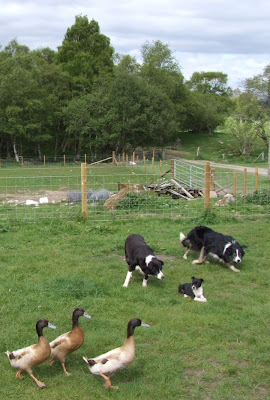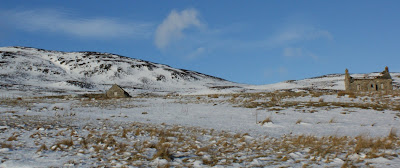
January 31st photograph of winter heather, north of
Pitlochry,
Perthshire,
Scotland. Heather is one of the commonest and most widely distributed plants in Scotland. It turns brown in winter, and can survive very low temperatures.

January 31st photograph of winter heather, north of
Pitlochry,
Perthshire,
Scotland.

January 31st photograph of winter heather, north of
Pitlochry,
Perthshire,
Scotland.

January 31st photograph of winter heather, north of
Pitlochry,
Perthshire,
Scotland.
All photographs are copyright of Sandy Stevenson, Tour Scotland, and may not be used without permission.
The Scots Herbal. The Plant Lore of Scotland. The first ever comprehensive guide to the many ways in which wild plants have been used in Scotland from prehistoric times to the present day. To our ancestors, there was no such thing as a weed. Every growing thing had a role to play in daily life - as an ingredient for food, as medicine, as a dye or as fodder for livestock. Tess Darwin reveals the forgotten secrets of Scottish plant lore in fascinating detail, showing how many of the plant remedies which were dismissed by modern scientists as superstition have since been found to be effective in treating illness and have led to the creation of many new drugs.Tess Darwin has delved deeply into the forgotten secrets of Scottish plant lore, gathering information from a wide range of sources - from old herbals to the most up-to-date scientific research. She has uncovered the uses and folklore of hundreds of plants - as an ingredient for food, as medicine, as a dye or the raw material for textiles, as fodder for livestock, and in traditional crafts like basket-making and thatching, wine-making and wood-carving.
The Scots Herbal: The Plant Lore of Scotland
.
Flora Celtica. Plants and People in Scotland documents the continuously evolving relationship between the Scots and their environment. Based on a mixture of detailed research and information provided by the public, this book explores the remarkable diversity of ways that native plants have been, and continue to be, used in Scotland. The information is presented in clear and accessible format and is laced with quotations, illustrations, case studies and practical tips. The book covers the complete spectrum of plant uses, addressing their diverse roles in our diet, healthcare, culture, housing, language, environment, crafts, and much more. It is ideal as a reference book and also a delight to dip into for all those with a passion for natural history. It is illustrated in colour throughout.
Flora Celtica: Plants and People in Scotland
.
Small group tours of Scotland.
Ancestry tours of Scotland.
Tour Scotland.
Tour Aberdeen,
Tour Dundee,
Tour Edinburgh,
Tour Glasgow,
Tour Isle of Skye.
Tour Glencoe,
Tour Loch Lomond.
Tour Loch Ness.





























